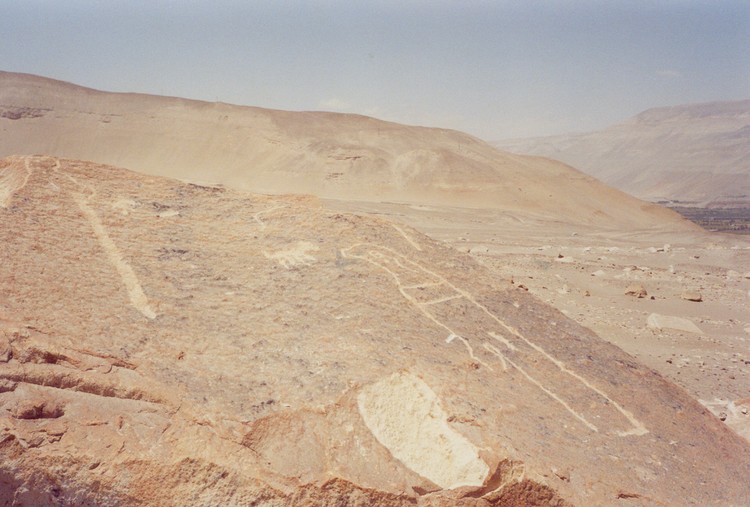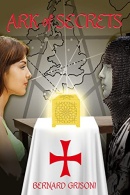<< Our Photo Pages >> Toro Muerto Petroglyphs - Rock Art in Peru
Submitted by SolarMegalith on Friday, 26 September 2008 Page Views: 8153
Rock ArtSite Name: Toro Muerto Petroglyphs Alternative Name: Petroglifos de Toro MuertoCountry: Peru
NOTE: This site is 89.991 km away from the location you searched for.
Type: Rock Art
Nearest Town: Corire
Latitude: 16.22446S Longitude: 72.502W
Condition:
| 5 | Perfect |
| 4 | Almost Perfect |
| 3 | Reasonable but with some damage |
| 2 | Ruined but still recognisable as an ancient site |
| 1 | Pretty much destroyed, possibly visible as crop marks |
| 0 | No data. |
| -1 | Completely destroyed |
| 5 | Superb |
| 4 | Good |
| 3 | Ordinary |
| 2 | Not Good |
| 1 | Awful |
| 0 | No data. |
| 5 | Can be driven to, probably with disabled access |
| 4 | Short walk on a footpath |
| 3 | Requiring a bit more of a walk |
| 2 | A long walk |
| 1 | In the middle of nowhere, a nightmare to find |
| 0 | No data. |
| 5 | co-ordinates taken by GPS or official recorded co-ordinates |
| 4 | co-ordinates scaled from a detailed map |
| 3 | co-ordinates scaled from a bad map |
| 2 | co-ordinates of the nearest village |
| 1 | co-ordinates of the nearest town |
| 0 | no data |
Internal Links:
External Links:
I have visited· I would like to visit
SolarMegalith visited on 1st Jul 2005 - their rating: Cond: 4 Amb: 5 Access: 3 Atmosphere I have never experienced before ... remote valley and petroglyphs in volcanic rocks.

The famous Toro Muerto petroglyphs are located not far from the town Corire in province Arequipa. The deserted valley is covered with tons of stones - on many of them you can find the petroglyphs.
The site was discovered to science in 1951, some sources claim that there are even 4000 rocks with petroglyphs here, but this number is certainly exaggerated. Still the pertoglyphs are really impressive - you can recognize various symbols here, mainly geometric ones and pictures of animals like lama or various birds. Most of the petroglyphs were carved in volcanic rock.
Note: Accompanying Science Daily article on Latin American rock art motifs.
You may be viewing yesterday's version of this page. To see the most up to date information please register for a free account.




Do not use the above information on other web sites or publications without permission of the contributor.
Nearby Images from Flickr






The above images may not be of the site on this page, but were taken nearby. They are loaded from Flickr so please click on them for image credits.
Click here to see more info for this site
Nearby sites
Click here to view sites on an interactive map of the areaKey: Red: member's photo, Blue: 3rd party photo, Yellow: other image, Green: no photo - please go there and take one, Grey: site destroyed
Download sites to:
KML (Google Earth)
GPX (GPS waypoints)
CSV (Garmin/Navman)
CSV (Excel)
To unlock full downloads you need to sign up as a Contributory Member. Otherwise downloads are limited to 50 sites.
Turn off the page maps and other distractions
Nearby sites listing. In the following links * = Image available
60.9km NNW 335° Tompullo 2* Ancient Village or Settlement
126.2km ENE 78° Sumbay Rock Art
201.0km ESE 120° Cerro Baul Ancient Village or Settlement
202.6km SE 141° Chiribaya Alta Ancient Village or Settlement
203.5km SE 140° Museo Chiribaya Museum
256.7km ENE 78° Sillustani necropolis* Ancient Temple
258.3km NNE 28° Raqchi* Ancient Temple
259.9km ENE 76° Lake Titicaca Raised Fields Ancient Village or Settlement
260.1km NNE 20° Waqrapukara Archaeological Park* Promontory Fort / Cliff Castle
281.6km E 83° Puno Fertility Sanctuary* Ancient Temple
286.0km NNE 12° Maucallacta Ancient Village or Settlement
290.9km E 90° Jiskairumoko Ancient Village or Settlement
294.2km WNW 298° Chauchilla Necropolis Barrow Cemetery
299.5km N 354° Saihuite Stone* Sculptured Stone
299.9km WNW 302° El Trigal Ancient Village or Settlement
301.1km WNW 301° La Tiza Ancient Village or Settlement
301.2km WNW 301° Cantalloc Aqueduct Ancient Mine, Quarry or other Industry
301.8km NNE 17° Rumiqullqa Ancient Mine, Quarry or other Industry
302.3km NNE 16° Pikillaqta Ancient Village or Settlement
302.5km NNE 16° Chokepukio Ancient Village or Settlement
302.5km NNW 344° Suntur Ancient Village or Settlement
302.7km WNW 300° Paredones Ancient Village or Settlement
303.0km WNW 301° Museo Antonini Museum
305.0km NNE 15° Tipon* Ancient Village or Settlement
305.3km N 11° Qhataqasapatallaqta Barrow Cemetery
View more nearby sites and additional images



 We would like to know more about this location. Please feel free to add a brief description and any relevant information in your own language.
We would like to know more about this location. Please feel free to add a brief description and any relevant information in your own language. Wir möchten mehr über diese Stätte erfahren. Bitte zögern Sie nicht, eine kurze Beschreibung und relevante Informationen in Deutsch hinzuzufügen.
Wir möchten mehr über diese Stätte erfahren. Bitte zögern Sie nicht, eine kurze Beschreibung und relevante Informationen in Deutsch hinzuzufügen. Nous aimerions en savoir encore un peu sur les lieux. S'il vous plaît n'hesitez pas à ajouter une courte description et tous les renseignements pertinents dans votre propre langue.
Nous aimerions en savoir encore un peu sur les lieux. S'il vous plaît n'hesitez pas à ajouter une courte description et tous les renseignements pertinents dans votre propre langue. Quisieramos informarnos un poco más de las lugares. No dude en añadir una breve descripción y otros datos relevantes en su propio idioma.
Quisieramos informarnos un poco más de las lugares. No dude en añadir una breve descripción y otros datos relevantes en su propio idioma.